A single centimetre of soil takes hundreds of thousands of years to form, while it takes only a few days—or an instant—for humans to degrade it. There are soils in which the detritus of human activity, such as rubbish, mining waste or building debris, has accumulated over time. Any soil that contains more than 20% of material handled by humans in the first metre below the surface has its own name: a technosol, according to the classification of the World Reference Base for Soil Resources. Most of these soils, whose nomenclature alludes to their technical origin, are degraded and contain toxic components. But technosols can also be tailor-made for beneficial purposes, such as increasing productivity or restoring damaged areas.
A model case for research into technosols is the fertile terra preta of the Amazon basin, patches of dark, carbon- and mineral-rich soil formed by the long accumulation of charcoal, bones, dung, food waste and pottery shards. Scientists knew the origins of these anthropogenic soils were ancient, but only recently has research shown that their creation was deliberate to improve harvests, and that indigenous people continue to create new terra preta today. In addition to their agricultural benefits, these fertile soils are effective carbon sinks, helping to combat climate change.
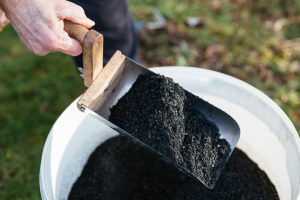
In the early 1990s, on the basis of cases such as these, researchers began to create tailor-made technosols with the aim of restoring heavily polluted areas. This scientific development involves the design and production of soils that can transform an entire ecosystem in record time, a process that could lead to the cultivation of deserts or the modification of the soils of other planets to terraform them into arable land.
A way to speed up the pace of nature
Advances in edaphology, the study of the composition and behaviour of soils, have made it possible to develop tailor-made technosols, based on the same processes that occur in natural ecosystems. In the biosphere, soils are an important control system, reducing the mobility and availability of compounds that reach water and living organisms. “Since we copy from nature, there are many models for generating technosols. But we can accelerate or magnify natural processes,” Felipe Macías, professor of edaphology at the University of Santiago de Compostela in Spain and director of its Environmental Technology Laboratory, which is developing these types of soils, tells OpenMind.
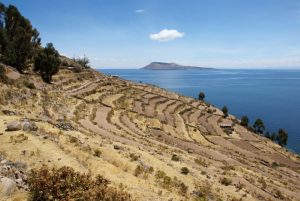
Macías’s team has spent years studying how ancient cultures improved their soils: from the floating islands of Lake Titicaca, built by the Uru people, to the plaggen soils of the Netherlands, fertilised from time immemorial with manure and grass waste, or the Guarani sambaquís of Brazil, formed by heaps of shell debris. These improved soils became a way of securing the harvests of those peoples. Tailor-made technosols replicate them to a large extent, but to solve more specific problems. “For example, if we have a surface with an excess of toxic heavy metals such as zinc, cadmium, mercury or arsenic, we generate a sambaquí soil that immobilises them based on the conditions we want to obtain,” explains Macías.
Alternative environmental treatment
In order to produce this type of soil, all possible resources available on site or in nearby areas are used. “To these can be added crushed rock, sediments, other soils, raw materials (such as kaolinite or gypsum) and even waste,” explains Macías. To figure out exactly what treatment a surface needs, it is first studied in the laboratory and then pilot technosols are developed and tested on a small scale. After verifying their effectiveness, they are produced and applied on an industrial scale.
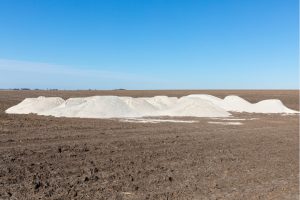
It can take months to produce a technosol and, once applied, it needs to be monitored to ensure it is working properly by regularly checking the acidity (pH) of the surrounding water and the presence of pollutants. Tailor-made soils are now an environmental alternative to the use of liming agents, such as limestone, which are often used to neutralise hazardous materials found in large excavations for infrastructure construction. “The regulations state that a technosol must always have fewer pollutants than the soil where it is applied, and it must also be designed to converge with it, in other words, over the years the technosol must blend with the surrounding soil,” says Macías.
Increasing the productivity of an area
Although so far most technosols are used to improve the environment—33% of the world’s soil is degraded, according to the United Nations—they can also be used to increase the productive capacity of a given area. “For example, we can design technosols that retain more water available for plants, allowing them to better match their growing season and improve production,” says Macías.
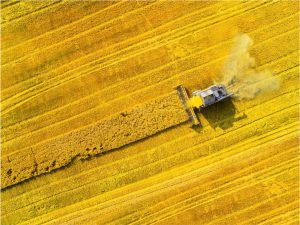
Any of the characteristics that a technosol improves can be found in a natural soil, such as the ability to produce vegetation, filter water or retain nutrients. But with this system, a lot can be achieved in a very short time. “We have harvested spring or summer canola without any problems whatsoever, three months after applying a technosol in a place where it didn’t grow before,” Macías points out. In this respect, the improvement achieved in the soil with this process is comparable to the hybridisation and selection of plants that farmers have carried out for centuries to obtain better harvests.
Solutions for extreme cases
The idea of using technosols to make a desert bloom still seems a long way off, but some tests have already been carried out in places with extremely poor soils. “We have successfully developed technosols for the La Guajira desert in Colombia and the Calanda desert in Spain. It is always possible to improve the condition of existing soils, especially those degraded by erosion, both in desert areas and in places that have been burned,” says Macías. So the use of a technosol means a much faster recovery than the soil would need without any intervention.
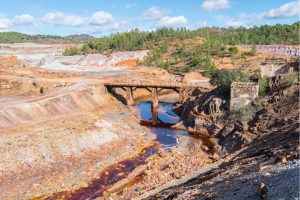
An abandoned copper mine in Touro, Spain, is the site where Macías’ team has conducted most of its trials. There they have developed the most amazing technosols. Macías says that “one of them is able to absorb water with a very acidic pH of 2.6 and loaded with sulphates and aluminium, and return water to a pH of 6.5 without sulphates or aluminium. In the same soil, where nothing used to grow, vegetation is now established and even wood is produced. The trophic chain has also evolved, with the appearance of insects, worms and birds, generating an increasingly complex ecosystem.” Macías’ group has also deployed technosols in other areas degraded by mining, such as the Iberian Pyrite Belt, which stretches from the coast of southern Portugal to Seville, or the Fe uranium mine in the province of Salamanca.
Terraforming other planets
The idea of a place where an ecosystem is created almost from scratch is reminiscent of the science fiction trilogy Red Mars, Green Mars and Blue Mars. In his novels, author Kim Stanley Robinson explores the pros and cons of terraforming the red planet, a goal far removed from today’s technological possibilities but which has inspired projects such as the failed Biosphere 2, an attempt in the 1990s to create a self-sufficient, closed ecosystem in the Arizona desert.
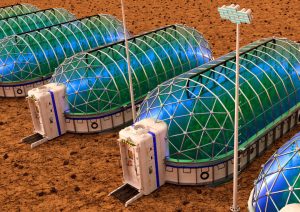
Macías explains that “if we were to succeed in establishing a colony on Mars, we could imagine making soil with the planet’s own materials, and adding others that would provide organic matter to generate the structure and water retention of a soil.” Many scientists are currently working to find a way to build viable bases on the Moon or Mars and to create arable soil, like the botanical astronaut character stranded on the red planet in the book and movie The Martian. But, concludes Macías, “today this is science fiction.” In any case, imagining it is the first step.
Comments on this publication